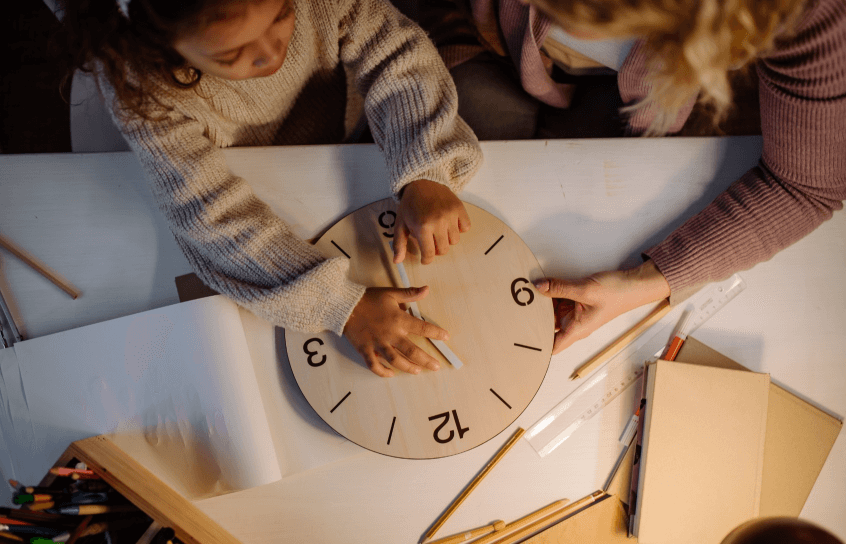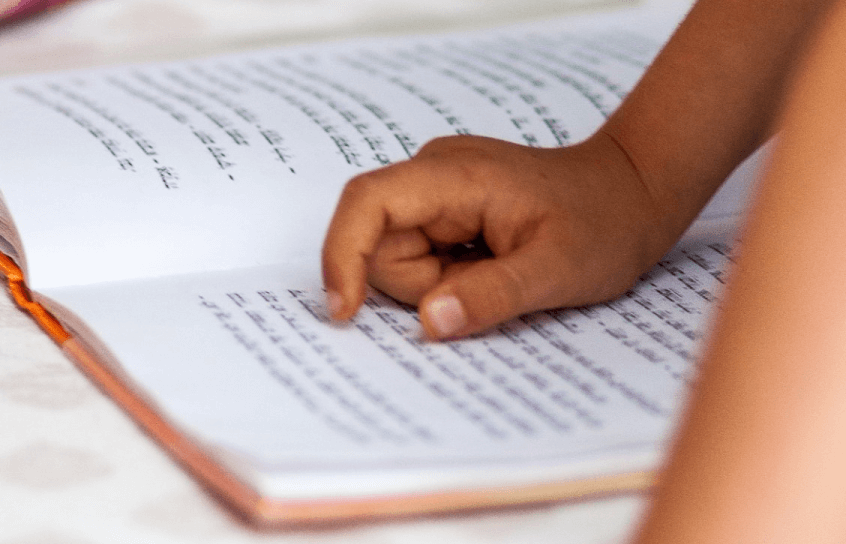Time management can be a significant challenge for students with ADHD due to challenges with “executive function” – i.e. a person’s ability to plan, organise, and complete tasks. Our executive functions help us do what we know we should do, allowing us to look ahead and assess which actions will benefit our future selves then take steps to execute those actions.
As special educational needs tutors, we regularly see that individuals with ADHD struggle with future thinking and find themselves getting stuck in the present. The benefit of doing tomorrow’s homework now might be avoiding detention later. However, a student with ADHD may be unable to look further ahead than the fun game they’re playing right now. The homework doesn’t get done, and the negative consequences come as a bit of a surprise the next day! It is essential to understand that this is a result of executive function difficulties rather than laziness or carelessness, and as such, requires tackling in a kind and supportive way.

What Are the Common Challenges?
Some of the typical time management challenges students may face include:
Difficulty with Focus and Sustained Attention
Students with ADHD often struggle to maintain focus on tasks for extended periods. This can result in difficulty starting assignments or projects on time and staying engaged until completion.
Time Perception Issues
ADHD can affect a person’s perception of time. Pupils may struggle to accurately estimate how much time a task requires, leading to underestimation and inadequate planning. Some students with ADHD may also have difficulty conceptualising the past, present, and future linearly, making it harder to plan and manage time effectively.
Organisational Challenges
Keeping track of assignments, deadlines, and class schedules can be overwhelming for students with ADHD. They may misplace important materials or forget about upcoming tests and projects.
Easily Distracted
Students with ADHD are easily distracted by internal and external stimuli. Even when attempting to manage time efficiently, they may find it challenging to resist distractions and stay on track.
Overcommitment
Students with ADHD might struggle to gauge how much they can realistically accomplish within a given timeframe, leading to taking on more tasks than they can handle, which can lead to stress and burnout.
Addressing these challenges requires a comprehensive approach that combines effective classroom accommodations, individualised support, and skill-building strategies. For example, using time management tools and breaking tasks into smaller, manageable steps can help students with ADHD develop better time management skills and succeed academically. Additionally, involving parents, teachers, and school counsellors can ensure a collaborative effort to support the student’s time management needs. Below are some tips to help students with ADHD develop successful time-management strategies.

Time-Management Techniques for Students with ADHD
There are many techniques to help adults manage their time. However, students with ADHD may need even more help. Here are my personal favourite methods to manage my time that can be used by students:
The Pomodoro Method
The Pomodoro Technique is a time management method invented in the 1980s by Francesco Cirillo. It aims to improve productivity and focus by breaking work into small, manageable intervals. Each interval, known as a “Pomodoro,” is typically 25 minutes long, followed by a short break of 5 minutes. After completing four Pomodoros, a longer break of 15-30 minutes is taken. The method is named after Cirillo’s kitchen timer, which was in the shape of a tomato, or in Italian, “pomodoro”!
The technique encourages individuals to prioritise tasks, eliminate distractions, and work with focused concentration during each Pomodoro. It provides a structured approach to work and helps prevent burnout by incorporating regular breaks. For students with ADHD, breaking down long stretches of unstructured time into shorter chunks can improve their time perception. Over time, they will develop an awareness of how much work they can do within 25 minutes, which will strengthen their ability to schedule and plan ahead.
Try breaking school work down into Pomodoros and taking those breaks when prompted. If sitting still is challenging, the student can use the breaks to burn off some physical energy. Or if the work is particularly unappealing to the student, mixing up the tasks (for example, Maths homework – break – English assignment – break – back to Maths) can create some novelty and generate higher interest.
Gamification
ADHD brains are interest-driven rather than importance-driven, so activities that capture an ADHD student’s curiosity or sense of fun will always come more easily to them than activities they perceive as boring. Therefore, making a game out of undesirable tasks can be an excellent way of increasing productivity. These can be as simple as racing against the clock (e.g., can you complete your maths homework before the timer goes off in 15 minutes?) or using a novelty pen to write with!
Creating a Distraction-Free Homework Zone
Students with ADHD are highly sensitive to their surroundings, so it’s essential to create an environment where they can feel calm and focused as they study. Each student’s ideal environment will be different. Still, it’s generally best to set them up somewhere quiet, away from noise and movement, in a space dedicated only to study. Visual time-management aids, such as clocks, week-to-view homework diaries, and schedule charts, can be beneficial. Allow students to choose their own work materials, such as pens, highlighters, notepads, iPad covers, etc., as this will help foster a sense of ownership and enjoyment of this space.








